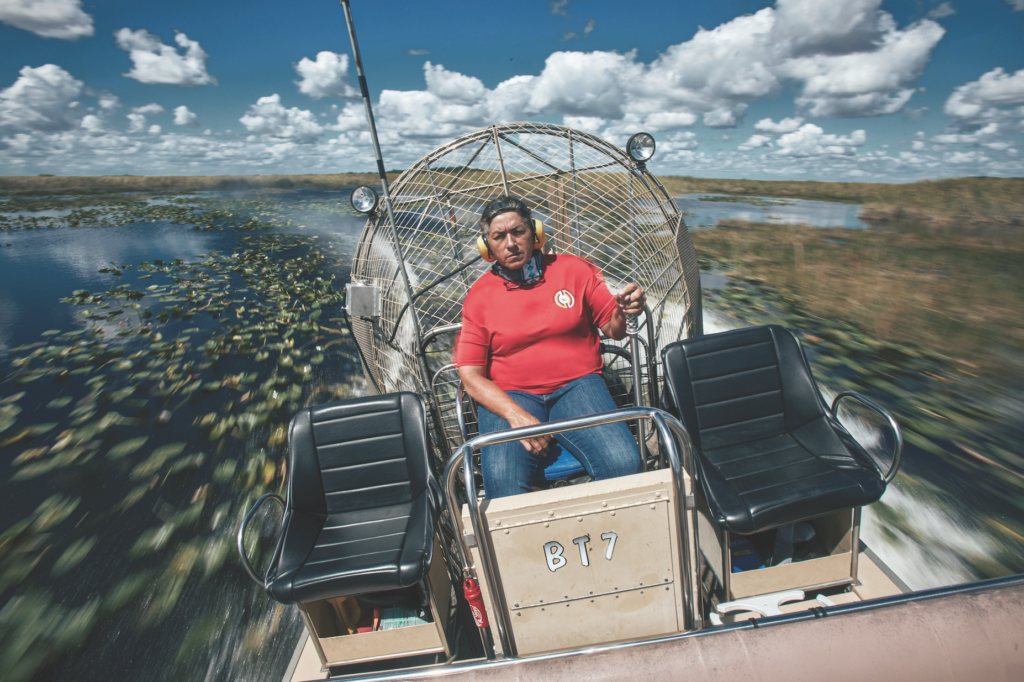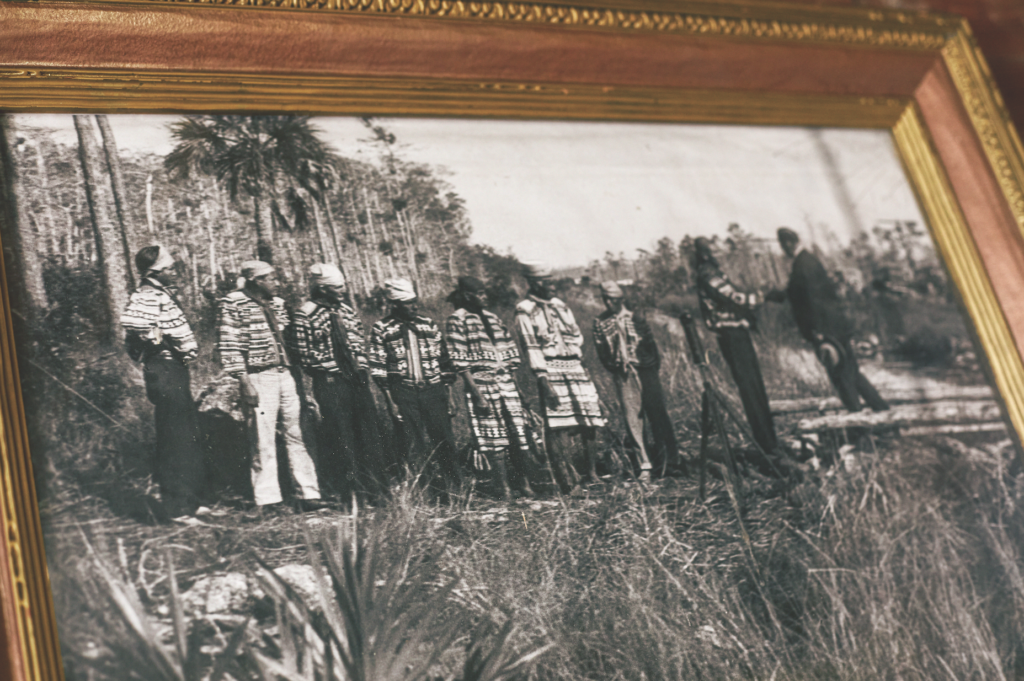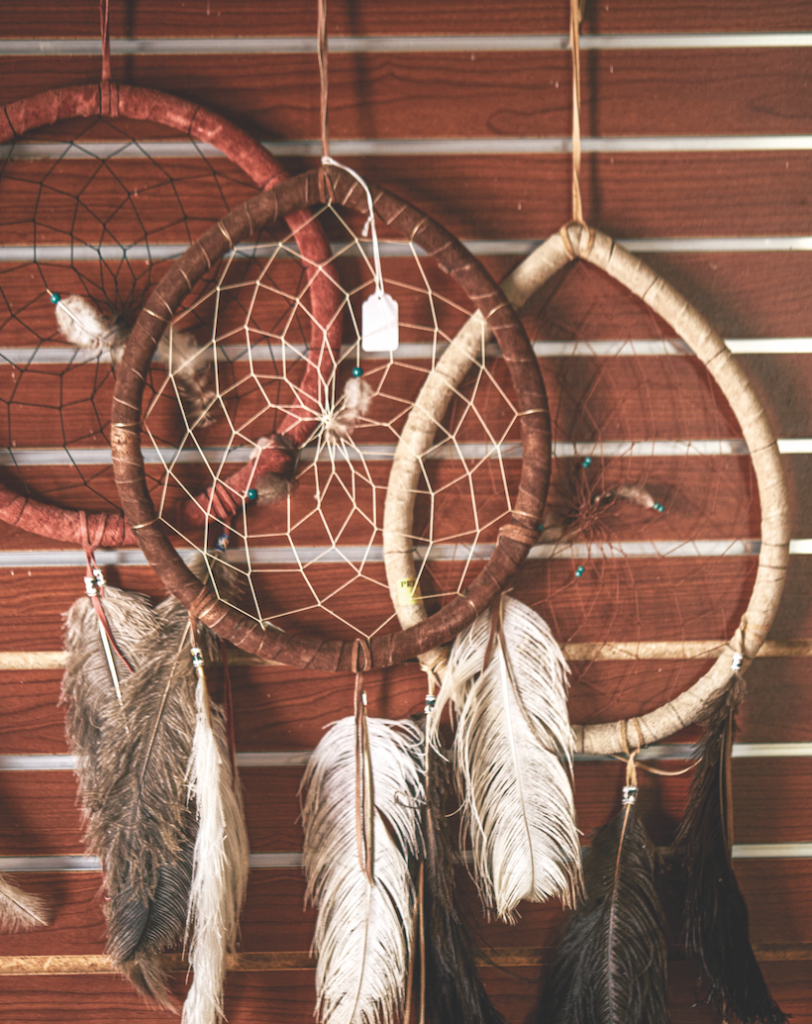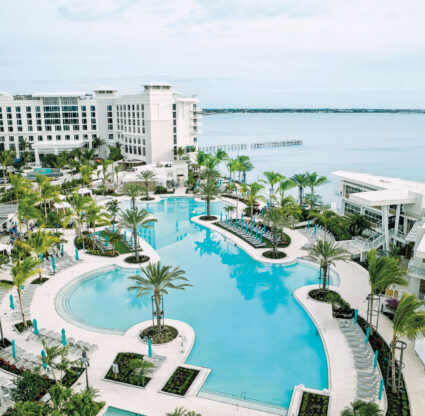Although Betty Osceola has traversed the Everglades thousands of times, she’s always discovers something new when she gets out on the water. On this sunny December morning during an airboat tour, it’s the leaves of the maple trees on an island that she frequently passes.
They had turned a bright orange and burgundy, popping among the swampy greens and browns of the Everglades like a nylon traffic vest. Combine that uncommon site with the classic ones, like the turtles sunning themselves on the mud patches, a great blue heron plodding in the sawgrass marsh, an anhinga soaring overhead, a 10-foot male alligator glaring back from the murky waters and the thrill she gets when she’s driving an airboat, and it was a perfect start to her morning. “It’s the closest you get to flying,” she says. “Gliding across the Everglades in the airboat, and stopping out there in nature away from civilization. It’s very relaxing, very grounding.”
Osceola has been guiding airboat tours with her company, Buffalo Tiger Airboat Tours, for more than 10 years. And her life is ingrained in this area. She’s a member of the Panther clan of the Miccosukee tribe, and spent her upbringing living off the land, hunting and fishing with her father. At age 5, after a long day of frogging with him on the water, they’d return to their tree island camp late at night, where Osceola would clean their haul by peeling off the frog skins one-by-one like a tiny pair of blue jeans. “If we were going to eat, it came from the Everglades,” Osceola says. “It didn’t come from the grocery store.”
But those days feel like a lifetime ago. The Everglades she grew up with is vastly different from the one she sees today, and especially right now. It’s flooded. Due to an abundance of rain, primarily from Tropical Storm Eta, many of the tree islands Osceola once slept on as a child have been submerged underwater for months, their roots slowly rotting. “The Everglades is supposed to be the river of grass,” she says. “But for the past four months, it’s like a lake out here.”

Just the other day, she saw turtle eggs floating away. She sees skinny alligators longing for their next meal, and knows that the crawfish will have trouble breeding with all of this water, which means one of the main food sources for the wading birds won’t be available. For Osceola, who’s long been an advocate for the Everglades, it falls in line with a concerning trend. “Man is the biggest threat to the environment right now,” she says. “When I was growing up, especially this time of year during the winter mornings, I’d hear flocks of birds before I saw them, passing by in the sky like a black cloud. You don’t see that anymore.”
The same goes with the Florida panther. She hasn’t seen one since her late teens. But in 2016, a game-camera spotted one, which is why a film crew from National Geographic tabbed Osceola as their guide for a Last Wild Places documentary on the Florida panther that will air this year. Osceola took the crew out for an overnight airboat tour, guiding them to the tree island where the panther was spotted, while simultaneously detailing her love for this place and conservation efforts over the years.
It’s not her first time doing so onscreen, having appeared in documentaries for CNN and PBS. There’s a reason why film crews and journalists seek out Osceola when the topic is about conservation. She’s been a prominent voice in Southwest Florida for most of her life. She’s led and organized several peaceful protests to protect Florida lands, like a 110-mile prayer walk around Lake Okeechobee to highlight its poor water quality, along with national environmental issues, like traveling to South Dakota to bring supplies for protesters during the Dakota Access Pipeline protests.
But the Everglades have always been one of her biggest concerns. Osceola knows that it will never go back to what she remembers as a child. Instead, her sense of urgency feels much more dire. “I want to make sure that the Everglades don’t disappear. It can happen,” she says. “When I speak to my grandchildren, I always talk about what I used to do. I would hope that one day my grandchildren, or maybe their children or grandchildren, can say ‘We do, we live off the land.’”
That’s why she uses every airboat tour as an opportunity—to answer questions about the Everglades from eager tourists, to teach about its delicate ecology, to explain its significance to her tribe, and most of all, to impart her appreciation for nature to others. “My goal is to share a glimpse,” Osceola says. “I love my homeland, and my hope is to share that love, and maybe, somebody else will fall in love with it, too. I want to be that spark.”








